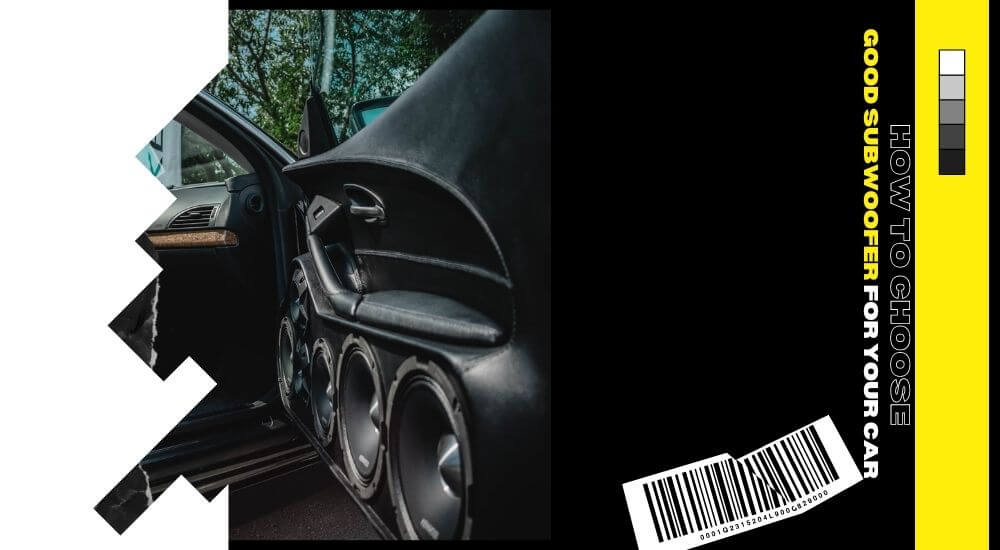Last Updated on September 7, 2021 by Mark S. Taylor
This guide will show you how to choose the right amplifier for your journey. There is a lot of information on how to choose your favorite amp. I have a lot of friends who have taught me a lot about audio systems, magazines, and online articles, and lately I’ve been expanding my knowledge extensively. Low frequency sound is an important part of good sound. The quality of an audio system depends on its ability to replicate bass and treble. Some types of music may benefit from a better subwoofer than others, but adding high-quality bass to your stereo can bring your music to life, although adding a subwoofer to an existing speaker setup will allow you to start all over again. are you going to do something Here are some details about the tasks to consider? Hope this helps those who don’t know what to buy.?
Contents
Step 1: Your car
First, the subwoofer/driver must have a proper vehicle idea. The size and available space of the vehicle directly affects the size and number of speakers that can be installed. If you’re like me, you probably don’t have a car right now, but if you have information about it, I wouldn’t block it (not at the time of writing, but a good idea)
Step 2: Measurements
Once the driver has decided which car and speakers to buy, it’s best to do some research first. It doesn’t matter if you’re talking to a close friend or a local electrician and knowledgeable person. Give your opinion or go online to find out about your car (if you don’t already have one). During the investigation, we measured the rear width of the car, the rear truck, and the trunk in liters. These measurements will help you calculate the trunk size (if the speakers fit) and will help you buy a better engine, so we’ll talk about that later. Depth and width are always important, but just as important as height. If you’re looking for a smaller driver like an 8 or 10 screwdriver, this size doesn’t really matter. I bought two 12 drivers. In other words, there was very little room for errors related to the height of the box other than the size of the frame (which I made myself).
Step 3: Enclosure Types
The next step is to determine the type of enclosure used to house the amplifier. Two types of packages sealed case, very simple design, good speaker performance, good bass response is used. Focus, improved bass frequencies, less distortion I don’ recommend it as have only heard of a subwoofer used in a round room, but I really like the loud, door-like sound.
Step 4: Buying the Subwoofer
Once you have all the information about your vehicle and the chassis you are using, you can buy a subwoofer. Looking at your favorite speakers can be confusing, but don’t worry. Here’s what I’m most looking for with help: Max) &Volume. Subwoofer (8, 10, 12, 15") Number of Audio Files (SVC or DVC) Let’s start with the performance description. Basically, do you see the performance of the subwoofer? More power This is a continuous rms wattage and the bass output is better when the system is not on. This shows exactly the output a subwoofer needs to produce a satisfying (and often fantastic) bass. You can’t usually find the RMS value, but if you’re looking for maximum power, you can divide that value by 2 to get the WRMS value for a particular amplifier. Image, driver size only. The most common Type 12 is probably because of its conical shape, which is full and not heavy. Finally, the number of audio files. The number of audio files will help you decide which type of speaker to use, but will not win. Here we explain that the number of audio files is basically the required input for the amplifier. If your subwoofer has only one audio reel (audio reel or SVC), this is the input.
Step 5: Conclusion
This is probably the simplest step in the process of updating a kit-installed audio system. It was our first installation and our customers were generally satisfied with the installation, as it is often done by professional automotive electricians. But doing it yourself can be the most difficult step, so we recommend the power of the motor. If you are unsure if you can do it yourself, this is an option. If you re-read the first part of step 2, you will find the following dimensions: Rear Trunk Width & Rear Width. The rear width is very simple, only the vehicle width of the rear truck is a bit complicated. The tip is usually referred to as the distance from the center of the tire to the center of the opposite tire. Take a good example of driving a truck in the sandy and muddy countryside. Looks exactly like 11: II and the shoes are very clean. So, the box is basically able to absorb water/air when full. The dimensions of these calculations are: Handle Width * Handle Length * Height or Handle Length * Width * Height. It is usually best to measure the height of the trunk in front of the rear seat where the subwoofer and body are placed. Enjoy the results of your new speakers! Please comment on these guidelines to help me write for other coaches.
Read More: How to Install Car Amplifier and Subwoofer

